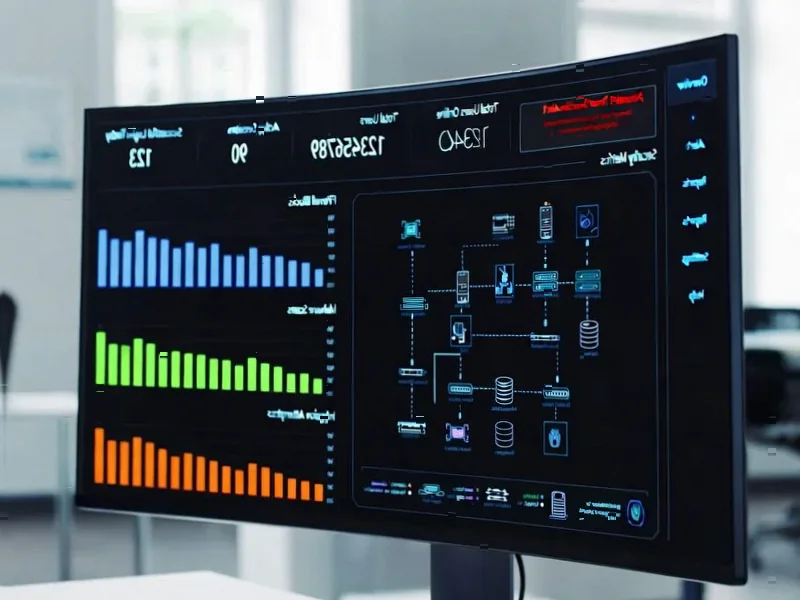According to ZDNet, Palo Alto Networks CEO Nikesh Arora has warned that enterprises are unprepared for the security risks posed by AI agents gaining access to corporate systems. During a media briefing, Arora expressed concern about customers lacking visibility into what credentials AI agents possess and what actions they’re taking, describing the potential outcome as “the Wild West in their enterprise platforms.” The cybersecurity leader revealed that Palo Alto’s research has identified 194,000 internet domains being used for smishing attacks, while noting that current identity management systems fail to track 90% of enterprise users due to cost constraints. Arora’s solution involves integrating CyberArk’s identity management capabilities and deploying Palo Alto’s new Cortex AgentiX platform, which uses automation trained on 1.2 billion real-world cyber threat playbook executions. This warning comes as organizations face increasing threats from automated attacks targeting privileged access credentials.
The Fundamental Flaw in Current Security Models
What Arora describes isn’t just another cybersecurity challenge—it represents a fundamental breakdown in how we conceptualize identity and access management. Traditional security models were built around human users with predictable patterns, physical presence requirements, and accountability through employment contracts. AI agents shatter these assumptions. They can operate 24/7, scale infinitely, and lack the natural constraints that make human monitoring somewhat manageable. The core problem isn’t just technical—it’s philosophical. We’re trying to fit non-human intelligence into human-centric security frameworks, and the mismatch creates vulnerabilities that current privileged access management (PAM) systems simply weren’t designed to handle.
The Unprecedented Scale of the Threat Surface
When Arora mentions that tracking all employees is “too expensive,” he’s highlighting a scaling problem that becomes exponentially worse with AI agents. Consider this: a single enterprise might deploy thousands of AI agents, each with different access levels, and these agents could spawn additional sub-agents dynamically. The identity management challenge grows from tracking thousands of human users to potentially millions of AI identities that can be created, modified, and retired in seconds. Current identity dashboards weren’t engineered for this level of complexity. The 194,000 smishing domains Palo Alto identified represent just the tip of the iceberg—automated attacks can scale at machine speed, while human security teams remain constrained by biological limitations.
The Dangerous Paradox of AI Security Automation
Arora’s proposed solution—using AI agents to fight AI threats—creates a dangerous circular dependency. Cortex AgentiX represents an attempt to automate security responses, but this approach introduces new risks. When security AI agents gain autonomy to detect and respond to threats, they essentially become the very privileged users they’re designed to protect against. The “human in the middle” approach that Arora describes as temporary protection will inevitably face pressure for removal in the name of efficiency. Security teams chasing faster response times will be tempted to grant more autonomy, creating a slippery slope where AI security agents could potentially become attack vectors themselves if compromised.
The Cross-Vendor Coordination Crisis
One of the most significant unaddressed challenges is the fragmentation across enterprise technology stacks. Arora correctly notes that actions “are not easily configured in the industry on a cross-vendor basis,” but this understates the problem. Enterprises typically use dozens of cloud services, SaaS applications, and legacy systems, each with their own identity and access management protocols. AI agents operating across this fragmented landscape create authentication blind spots that malicious actors can exploit. The acquisition of CyberArk represents Palo Alto’s attempt to create a unified platform, but the reality is that no single vendor can realistically consolidate the entire enterprise identity ecosystem, especially when legacy systems and multi-cloud environments remain the norm.
The Coming Wave of Automated Credential Attacks
The smishing attacks Palo Alto documented represent just the beginning of automated credential harvesting campaigns. As AI agents become more sophisticated, we’ll see automated social engineering at scale, where AI-powered attackers can generate personalized, context-aware phishing attempts targeting specific employees based on their role, access levels, and even behavioral patterns. The 194,000 domains identified are likely just the testing phase—successful campaigns will rapidly scale across thousands more domains, using AI to constantly evolve tactics and bypass detection. The fundamental problem is that human employees remain the weakest link, and AI-powered attacks can exploit this vulnerability with unprecedented efficiency and personalization.
The Missing Regulatory and Standards Framework
Perhaps the most concerning aspect of this emerging threat landscape is the complete absence of regulatory frameworks or industry standards for AI agent identity management. While human identity management has decades of established practices, regulations, and compliance requirements, AI agents operate in a regulatory vacuum. There are no standards for certifying AI agent identities, no requirements for auditing AI agent actions, and no legal frameworks establishing liability when AI agents cause security breaches. This regulatory gap creates enormous uncertainty for enterprises and represents a systemic risk that individual vendor solutions cannot address alone.
A Realistic Assessment of Enterprise Preparedness
The harsh reality is that most enterprises are years away from being properly prepared for AI agent security challenges. The combination of technical debt in existing identity systems, budget constraints for security modernization, and the rapid pace of AI adoption creates a perfect storm. While Palo Alto’s solutions represent steps in the right direction, the fundamental architectural changes required—rethinking identity management from the ground up for a mixed human-AI workforce—will take years to implement across most organizations. In the meantime, enterprises will be playing catch-up while attackers continue to refine their automated tools, creating a dangerous asymmetry that favors those seeking to exploit these new vulnerabilities.




